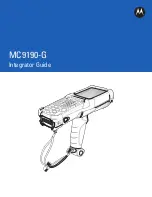
realwear.com
7
How to tell if equipment is legitimately safe to be used in hazardous locations?
An intrinsically safe product must go through a rigorous set of tests put forth by experts in the field of safety. Products
that stand up to these standards and pass these tests are considered “Intrinsically Safe Certified.”
There are many different authorized agencies that certify intrinsically safe equipment. The European certification is
called ATEX; the most prevalent United States agency is called UL; the most well-known Canadian agency is called CSA;
and, a general provider of certification across the globe is called IECEx. Any equipment that is used in hazardous
locations should be certified by one of these well-known systems and agencies.
What is ATEX?
ATEX is an abbreviation for "ATmosphere EXplosible". At the same time, ATEX is the abbreviated name of the European
Directive 2014/34/EU concerning the placing on the market of explosion-proof electrical and mechanical equipment,
components and protective systems.
It also covers safety devices, controlling devices and regulating devices intended for use outside potentially explosive
atmospheres but required for, or contributing to, the safe functioning of equipment and protective systems with respect
to the risks of explosion.
Equipment and protective systems which fall under Directive 2014/34/EU may be placed on the market only if they bear
a CE mark and are accompanied by an EC attestation of conformity certifying that the basic health and safety
requirements have been met and that the applicable conformity assessment procedures have been observed.
Classification of Zones
According to Directive 2014/34/EU, a potentially explosive area is a space in which the atmosphere could become
explosive on account of the local and/or operational conditions. An explosive atmosphere is defined as a mixture with
air, under atmospheric conditions, of flammable substances in the form of gases, vapors, mists or dust in which, after
ignition has occurred, combustion spreads to the entire unburned mixture. In North America, hazardous locations have
traditionally been defined by a combination of classes and divisions as follows:
Hazard - Gas / vapor / mist
Zone 0
A place in which an explosive atmosphere consisting of a mixture with air of dangerous substances in
the form of gas, vapor or mist
is present
continuously or for long periods or frequently
Zone 1
A place in which an explosive atmosphere consisting of a mixture with air of dangerous substances in
the form of gas, vapor or mist
is likely
to occur in normal operation occasionally
Zone 2
A place in which an explosive atmosphere consisting of a mixture with air of dangerous substances in
the form of gas, vapor or mist
is not likely
to occur in normal operation but, if it does occur, will persist
for a short period only
Figure 1: Zone Classification for Gas/Vapor/Mist








































